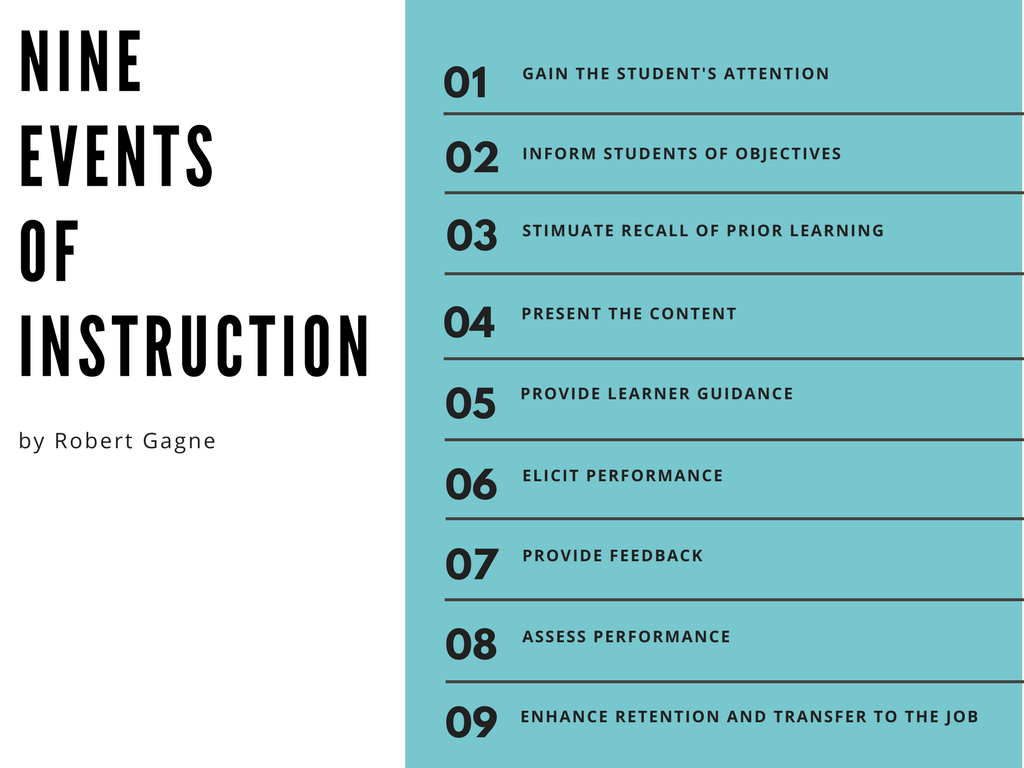Reading any history of instructional design (ID) will quickly lead you to the names Robert Gagné and Leslie Briggs. This is for good reason.
Robert Gagné, called Bob by those who knew him, is often considered the father of ID. At his side through much of his career, first as a subordinate, then colleague and co-author was Leslie Briggs, known as Les.
World War II, the beginning of modern ID
During World War II, many psychologist and educators were called on by the United States military to conduct research and develop materials for training of the military.
Bob assisted in the war effort in many ways including the development of aptitude tests of psycho-motor skills that helped to select pilots and navigators. After the war, in 1951, he was joined by Les in Air Force training research.
The experience of developing military training would shape the rest of Bob and Les’ careers and form the basis for the field of instructional design.
Books that defined the profession

Psychological Principles in System Development, published in 1962, is a summary of the work done by the early pioneers of instructional design. Read it here

The Conditions of Learning, first edition published in 1965, describes five domains of learning outcomes and nine events of instruction. Summary here

Principles of Instructional Design, first published in 1974, is a textbook for training instructional designers. Currently in its 5th edition, it is still in use. Read it here
Taxonomy of Learning Outcomes
Gagné described 5 learning outcomes and the conditions required (i.e. his Conditions of Learning) to promote the learning of each type.
Praise: Learning outcome taxonomies assist in the planning of instructional strategies.

Criticism: Two issues with using a taxonomy of learning outcomes, noted by Les, are they do not take into account the prior knowledge of the learners or consider individualized instruction. Those factors can cause the same performance objective to require different learning outcomes.
9 Events of Instruction
The nine events of instruction provide an outline for teachers and instructional designers.
Praise: These events of instruction have proved an aid to instructional design since their inception.

Criticism: Much of the criticism of these events falls on the implementation and a need for empirical data on individual steps. Even Bob and Les note that not every step is relevant in every situation, the order can be shifted and that it is the implementation that matters most.
Learning Hierarchy
Learning hierarchies break the learning of a task down into individual skills and identify those that are subordinate.
Praise: These hierarchies were the beginning of learning-task analysis, information-processing analysis and procedural analysis.

Criticism: There is very little criticism for the concept. This model of breaking down tasks into prerequisite steps remains much used.
Openness to Ideas: A Lasting Legacy
The work of Bob and Les has become a lasting legacy for instructional design. In reading about these two IDs, they left another legacy in the minds of those they worked.
They sought out and were open to the ideas of others.
These men both constantly and consistently were in collaboration with those around them.
Les writes about several colleagues:
It is possible I cannot accurately disentangle his ideas from mine, but I acknowledge my debt…”
About Bob, it is written:
…what these people talk about most is what they learned from Bob Gagné, from his spontaneous questions, irrepressible curiosity, and creative mind. He left a legacy here of his work ethic, clear thinking, openness to new ideas, and willingness to help others.”
Watch an interview! Here is an extensive one with Robert Gagné from 1989 titled, A Conversation on Instructional Design.
To next blog post – Saving Time
Back to previous blog post – Why are IDs Required

